
Japan’s automotive scene is a relentless crucible of precision engineering, motorsport lineage, and an unwavering pursuit of performance innovation. For decades, the Land of the Rising Sun has gifted the world some of the most iconic and beloved vehicles, cars that have shaped enthusiast culture and pushed the boundaries of what’s possible on four wheels. Beyond the widely celebrated titans like the Skyline GT-R or the legendary Supra, however, there exists an even more exclusive echelon of automotive artistry.
These are the ultra-rare variants, the limited-production marvels, and the homologation specials that represent the pinnacle of Japanese design and engineering ambition. They are vehicles that whisper tales of daring challenges, technological breakthroughs, and an unbridled passion for speed. Often born from the necessity to dominate motorsport or simply from an unadulterated desire to craft something truly extraordinary, they push manufacturing capabilities to their limits.
Today, we embark on an exhilarating journey through the annals of Japanese automotive history, spotlighting 15 of the rarest and most coveted collector cars. These are not merely modes of transport; they are collectible masterworks, each a testament to Japan’s profound capacity for producing vehicles cherished by enthusiasts worldwide for their unique blend of heritage, performance, and scarcity. Let’s peel back the layers and discover the fascinating stories behind these automotive jewels, starting with seven of the most historically significant and influential models.
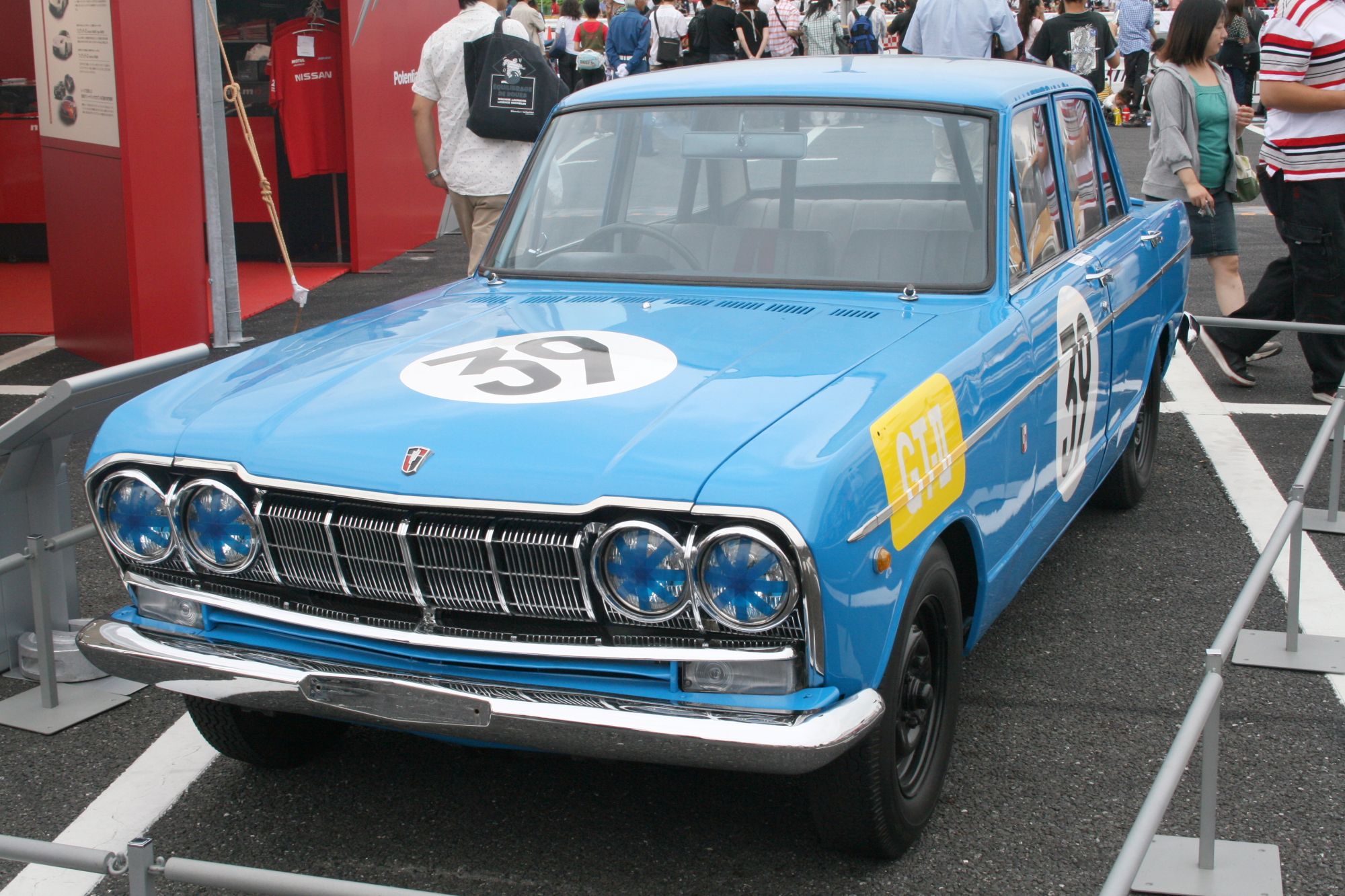
1. **1964 Prince Skyline GT S54 (Racing Version)**Stepping back into the formative years of Japanese motorsport, we encounter a true pioneer: the 1964 Prince Skyline GT S54. This racing version emerged from Prince Motor Company, a marque with a rich pre-Nissan lineage, that dared to challenge formidable European giants like Porsche at the 1964 Japan Grand Prix. It was a bold declaration of Japan’s rising motorsport ambitions, embodying the spirit of early Japanese GT racing and cementing its place in history.
Under its hood pulsed a 2.0L G7 inline-six engine, delivering approximately 125 hp in factory tune, with even higher output in its dedicated race trim. Prince produced only a small, highly exclusive run of these S54-based race models, their existence largely overshadowed when Nissan absorbed Prince in 1966. Survivors are exceptionally seldom seen, typically residing in private collections or within Nissan’s own meticulously preserved heritage fleet. Their public appearances are rare, occasionally gracing Nissan Heritage events or specialized Japanese car festivals, offering a glimpse into a pivotal moment in automotive and motorsport history.
Car Model Information: 2025 Volkswagen Atlas 2.0T SE
Name: Nissan Skyline
Caption: 2019 Nissan Skyline Hybrid GT Type SP (HV37, Japan)
Manufacturer: unbulleted list
Aka: unbulleted list
Production: 1957–present
Class: unbulleted list
Layout: unbulleted list
Related: unbulleted list
Predecessor: Prince Sedan
Categories: 1960s cars, 1970s cars, 1980s cars, 1990s cars, 2010s cars
Summary: The Nissan Skyline (Japanese: 日産・スカイライン, Hepburn: Nissan Sukairain) is a brand of automobile originally produced by the Prince Motor Company starting in 1957, and then by Nissan after the two companies merged in 1967. After the merger, the Skyline and its larger counterpart, the Nissan Gloria, were sold in Japan at dealership sales channels called Nissan Prince Shop.
The Skyline was largely designed and engineered by Shinichiro Sakurai from inception, and he remained a chief influence of the car until his death in 2011.
Skylines are available in either coupé, or sedan body styles, plus station wagon, crossover, convertible and pickup/sedan delivery body styles. The later models are most commonly known by their trademark round brake and tail lights. The majority of Skyline models are rear-wheel drive, with all-wheel drive being available since the debut of the eighth-generation Skyline (R32).
While not distributed in the United States until its importation as the Infiniti G-series in the early 2000s (the first generation Prince Skyline was imported, but sold poorly), the Skyline’s prominence (particularly for the GT-R variant) in video games, movies and magazines resulted in many such cars being brought in as grey import vehicles there, and makes up a large amount of second-hand Japanese car imports to Europe and North America.
Starting with the third-generation Skyline (C10) and up to the tenth-generation Skyline (R34), the chassis, suspension and some of the engines were shared with the luxury-oriented longer wheelbase Nissan Laurel. When the former Prince factory at Musashimurayama closed in 2002 (coinciding with the discontinuation of the Laurel that same year), the Skyline used the then-new FM platform that was shared with the 350Z starting with the eleventh-generation Skyline (V35).
The eleventh-generation Skyline (V35) was another major turning point for the nameplate, as it dropped some of the previous generation Skyline’s trademark characteristics such as the straight-six engine (replaced with a V6) and turbocharging (reintroduced in the thirteenth-generation/V37 model), and eventually separated the GT-R into its own line. Nissan decided to retain the Skyline for the luxury-sport market segment formerly held by the Laurel, while its platform-mate, the 350Z, revived the Z line of pure sports cars. The V35 was the first Skyline made for export to North America, being sold under Nissan’s luxury marque Infiniti as the G35 in 2002. The Skyline (V36/J50) is sold in Europe, North America, South Korea, Taiwan, and the Middle East as the Infiniti G37 and EX respectively.
As of 2024, the Skyline is the only remaining sedan in Nissan’s Japanese lineup following the discontinuation of both the Fuga and Cima in 2022.
Get more information about: Nissan Skyline
Buying a high-performing used car >>>
Brand: Prince Model: Skyline GT S54
Price: $40,000 Mileage: 8,605 mi.
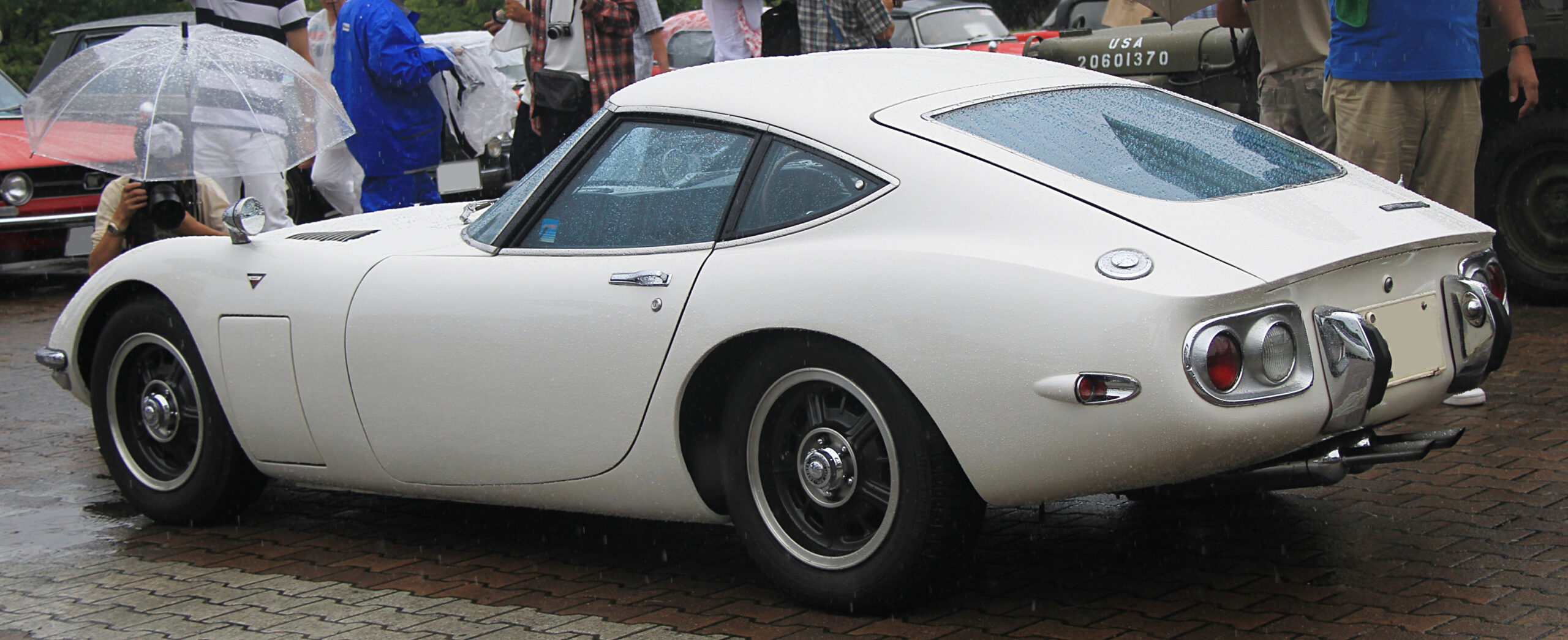
2. **1967 Toyota 2000GT**Widely heralded as Japan’s first true supercar, the 1967 Toyota 2000GT represents a magnificent fusion of elegant styling, advanced engineering, and unparalleled craftsmanship. Jointly developed by Toyota and Yamaha, this exquisite machine captivated the global automotive scene upon its debut, proving that Japan could produce world-class sports cars capable of rivaling the most revered European exotics. Its stunning refined lines and sophisticated mechanicals instantly set a new, elevated standard for Japanese design.
Beneath its graceful bonnet lay a meticulously crafted 2.0L DOHC inline-six engine, producing around 150 hp, an impressive output for its time that translated into spirited performance. Only 351 units were ever built, each with subtle variations, ensuring its rarity from inception. Its mystique was significantly amplified by a memorable cameo in the iconic James Bond film “You Only Live Twice,” where a unique convertible version was featured. Today, the values of these DOHC sports coupes have soared, establishing them as highly sought-after treasures at high-end auctions, permanent fixtures in the Toyota Museum, or the undisputed stars of exclusive Japanese classic car meets.
Read more about: Golden Icons: Valuable Cars of the 1960s and Their Enduring Legacy
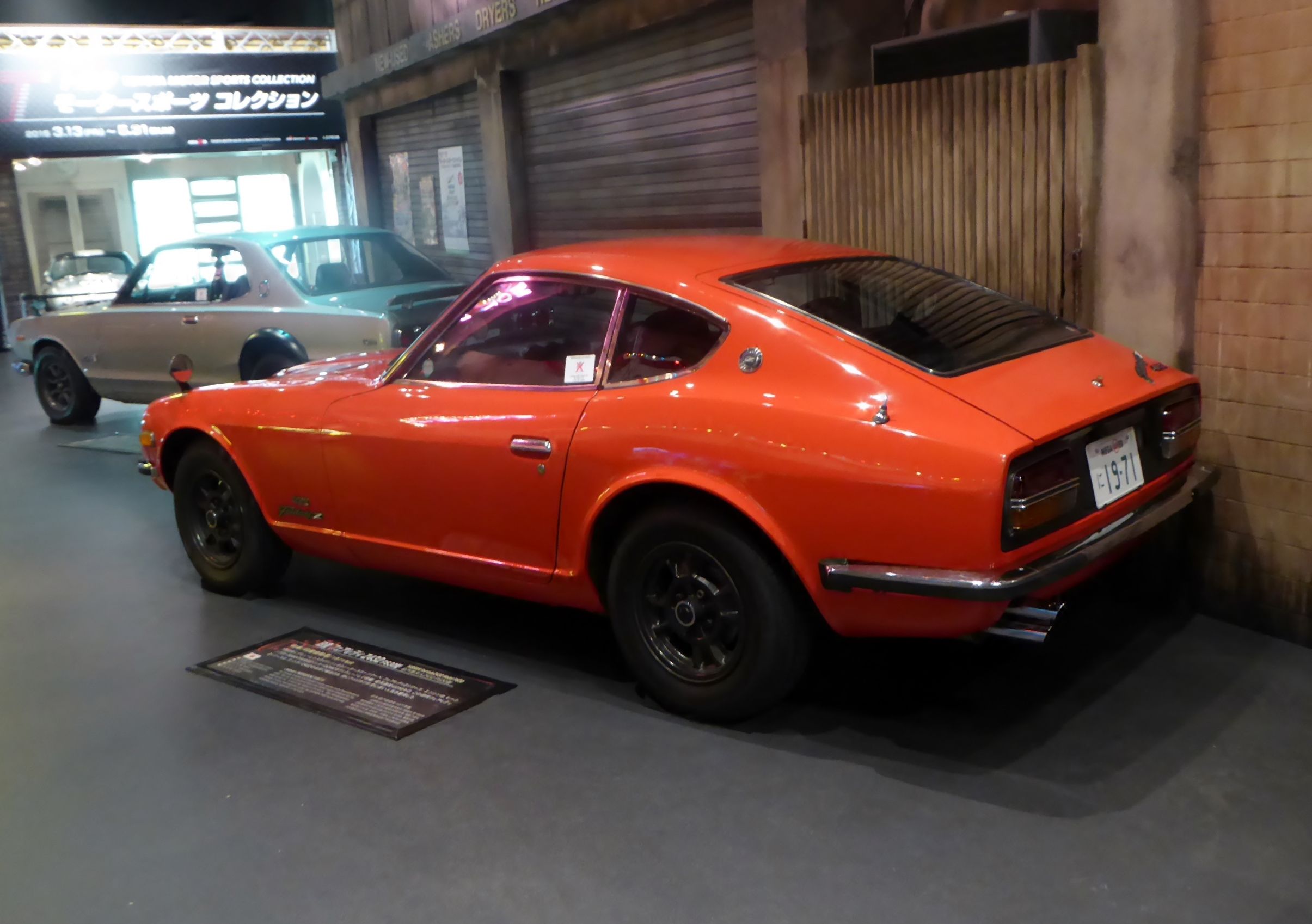
3. **1970 Nissan Fairlady Z 432R (PS30)**For the uninitiated, the 1970 Nissan Fairlady Z 432R might appear similar to its more common brethren, but this PS30 chassis is a purpose-built beast crafted for the track. Nissan achieved this by fitting the race-bred S20 inline-six engine, famously derived from the Skyline GT-R, directly into the lighter, more agile Fairlady Z platform. The “432R” designation itself hints at its performance pedigree, standing for “4 valves, 3 carburetors, 2 cams” – a precise engineering mantra reflecting its motorsport-derived heart.
This lightweight homologation special featured the potent 2.0L S20 engine, capable of producing approximately 160–170 hp, providing blistering acceleration. Its production numbers were minuscule, with fewer than 50 units ever built, primarily sold within Japan for private racing endeavors or to the most dedicated hardcore enthusiasts. Consequently, the original 432R is an exceptionally sought-after vehicle, fetching substantial sums at specialized JDM auctions. Witnessing one is a genuinely rare privilege, usually occurring only at Z-focused car shows or within the sacred, carefully curated halls of Nissan’s revered heritage exhibits.
Car Model Information: 2025 Volkswagen Atlas 2.0T SE
Name: Nissan Fairlady Z (Datsun 240Z, 260Z, and 280Z)
Aka: unbulleted list
Manufacturer: Nissan
Production: 1969–1978
Class: Sports car
Layout: Front-engine, rear-wheel-drive layout
Assembly: Hiratsuka, Kanagawa
BodyStyle: unbulleted list
Designer: Yoshihiko Matsuo
Predecessor: Datsun Sports
Successor: Nissan Fairlady Z (S130)
Caption: 1970–1973 Nissan Fairlady Z
Categories: 1970s cars, All Wikipedia articles written in American English, All articles with unsourced statements, Articles with short description, Articles with unsourced statements from February 2021
Summary: The Nissan S30, sold in Japan as the Nissan Fairlady Z but badged as the Datsun 240Z, 260Z, and 280Z for export, are 2-seat sports cars and 2+2 GT cars produced by Nissan from 1969 until 1978. The S30 was conceived of by Yutaka Katayama, the President of Nissan Motor Corporation U.S.A., and designed by a team led by Yoshihiko Matsuo, the head of Nissan’s Sports Car Styling Studio. It is the first car in Nissan’s Z series of sports cars.
The S30 had four-wheel independent suspension and a powerful straight-six engine with an overhead camshaft, features identified with far more expensive premium European sports cars and coupés such as the Jaguar E-Type and BMW 2800 CS, but absent from similarly priced sports cars such as the Alfa Romeo Spider, MGB and Opel GT, which had smaller four-cylinder engines and rear live axles. The S30’s styling, engineering, relatively low price, and impressive performance resonated with the public, received a positive response from both buyers and the motoring press, and immediately generated long waiting lists.
As a halo car, the S30 broadened the acceptance of Japanese carmakers beyond their image as producers of practical and reliable but prosaic and unfashionable economy cars. Datsun’s growing dealer network—compared to limited production imported sports cars manufactured by Jaguar, BMW, Porsche, Alfa Romeo, and Fiat—ensured both easy purchase and ready maintenance.
The S30 was initially sold alongside the smaller four-cylinder Datsun Sports, which was dropped from production in 1970. The S30 240Z is unrelated to the later 240SX, sold as the Silvia in Japan.
Get more information about: Nissan Fairlady Z (S30)
Buying a high-performing used car >>>
Brand: Nissan Model: Fairlady Z 432R
Price: $40,000 Mileage: 8,605 mi.
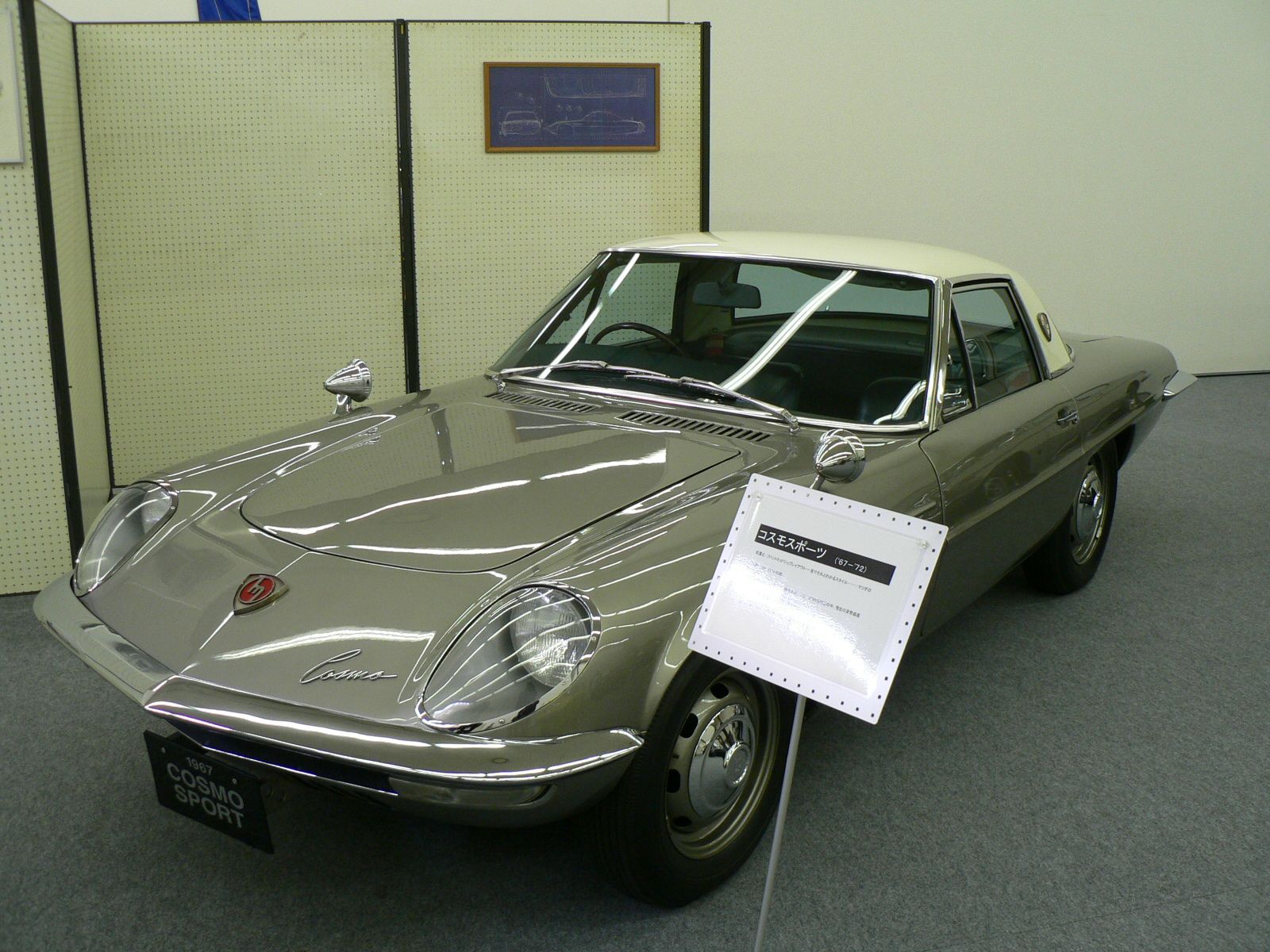
4. **1972 Mazda Cosmo Sport L10B (Series II)**The Mazda Cosmo Sport stands as an indelible monument to automotive innovation, serving as Mazda’s pioneering rotary sports car that dared to challenge conventional engine design. This visionary vehicle, especially its L10B Series II iteration, was a testament to Mazda’s audacious commitment to the revolutionary Wankel rotary engine, a design that would go on to define the brand’s unique identity for decades. The Series II specifically brought crucial improvements, enhancing both output and overall reliability to the groundbreaking rotary concept.
Powering this early Wankel rotary pioneer was a 10A twin-rotor engine, delivering around 130 hp in the L10B, a figure that belied its smooth, turbine-like power delivery and impressive high-revving capabilities. The total production of all Cosmo Sports models was remarkably limited to under 1,200 units worldwide, making the Series II portion even smaller and thus, exponentially more exclusive and desirable. Rotary enthusiasts and automotive historians revere these cars not just for their distinctive engine note, but for their profound historical significance as the torchbearers of rotary technology. These stunning vehicles are occasionally found at the Mazda Museum in Hiroshima, making star appearances at specialized rotary gatherings, or commanding attention at prominent classic Japanese automotive auctions.
Car Model Information: 2023 Dodge Challenger SRT Hellcat
Name: Mazda Cosmo
Manufacturer: Mazda
Production: 1967–1996
Class: Sports car
Layout: Front-engine, rear-wheel-drive
Assembly: Hiroshima
Caption: 1968 Mazda Cosmo L10B
Categories: 1970s cars, 1980s cars, 1990s cars, Articles containing Japanese-language text, Articles with short description
Summary: The Mazda Cosmo (マツダ・コスモ, Matsuda Kosumo) is an automobile produced by Mazda from 1967 to 1996. During its production run, the Cosmo served as a “halo” vehicle for Mazda, with the first Cosmo successfully launching the Mazda Wankel engine. The final generation of the Cosmo served as Mazda’s flagship vehicle in Japan, sold as the Eunos Cosmo through its luxury Eunos division in Japan.
Mazda decided on the name “cosmo”, reflecting international cultural fascination with the Space Race, Mazda wanted to showcase the Mazda Wankel engine as forward-thinking, with focus on future developments and technology.
Get more information about: Mazda Cosmo
Buying a high-performing used car >>>
Brand: Mazda Model: Cosmo Sport
Price: $66,988 Mileage: 16,559 mi.
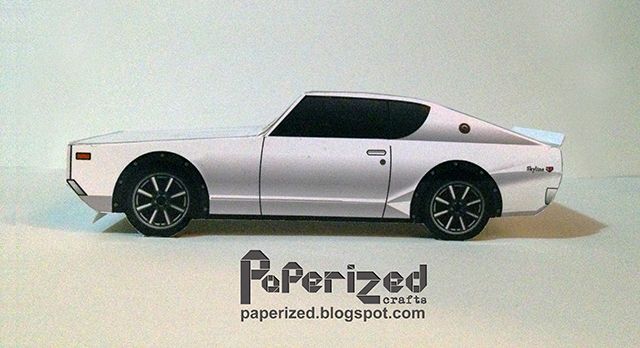
5. **1973 Nissan Skyline 2000 GT-R “Kenmeri” (KPGC110)**The 1973 Nissan Skyline 2000 GT-R, affectionately known as the “Kenmeri,” holds a particularly poignant place in the illustrious GT-R lore. This was the highly anticipated second-generation GT-R, which quickly earned its enduring nickname from a hugely popular TV advertisement that captured the hearts of the Japanese public, featuring a wholesome couple named Ken and Mary. Despite its instant cultural impact and the immense anticipation it generated, the Kenmeri’s production run was, regrettably, extraordinarily brief.
Equipped with the formidable 2.0L S20 inline-six engine, generating approximately 160 hp, the Kenmeri was undeniably a true performance machine. However, its story is famously one of an emissions-choked demise, as Nissan was unceremoniously forced to end GT-R production prematurely due to the sudden and severe tightening of emissions regulations of the era. Officially, a mere 197 units were ever built, making it among the hardest vintage Skylines to find anywhere in the world, a genuine holy grail for collectors. These iconic, quickly discontinued cars make exceedingly rare public appearances, typically confined to top-tier Skyline events or residing within the sacred, secure halls of Nissan’s Zama storage facility.
Car Model Information: 2023 Dodge Challenger SRT Hellcat
Name: Nissan Skyline GT-R
Caption: 2002 Nissan Skyline GT-R V·spec II (BNR34)
Manufacturer: Nissan
Production: unbulleted list
Assembly: unbulleted list
Class: Sports car
Related: unbulleted list
Transmission: unbulleted list
Predecessor: Nissan Skyline#BLRA-3 Skyline Sport
Successor: Nissan GT-R
Categories: 1970s cars, 1980s cars, 1990s cars, 2000s cars, 24 Hours of Le Mans race cars
Summary: The Nissan Skyline GT-R (Japanese: 日産・スカイラインGT-R, Hepburn: Nissan Sukairain GT-R) is a Japanese sports car based on the Nissan Skyline range. The first cars named “Skyline GT-R” were produced between 1969 and 1972 under the model code KPGC10, and were successful in Japanese touring car racing events. This model was followed by a brief production run of second-generation cars, under model code KPGC110, in 1973.
After a 16-year hiatus, the GT-R name was revived in 1989 as the BNR32 (“R32”) Skyline GT-R. Group A specification versions of the R32 GT-R were used to win the Japanese Touring Car Championship for four years in a row. The R32 GT-R also had success in the Australian Touring Car Championship, with Jim Richards using it to win the championship in 1991 and Mark Skaife doing the same in 1992, until a regulation change excluded the GT-R in 1993. The technology and performance of the R32 GT-R prompted the Australian motoring publication Wheels to nickname the GT-R “Godzilla” in its July 1989 edition. Wheels then carried the name through all the generations of Skyline GT-Rs, most notably the R34 GT-R, which they nicknamed “Godzilla Returns”, and described as “The best handling car we have ever driven”. In tests conducted by automotive publications, R34 GT-R have covered a quarter of a mile (402 metres) in 12.2 seconds from a standing start time and accelerated from 0–100 km/h (0–62 mph) in 4.4 seconds.
The Skyline GT-R became the flagship of Nissan performance, showing many advanced technologies including the ATTESA E-TS all-wheel drive system and the Super-HICAS four-wheel steering. Today, the car is popular for import drag racing, circuit track, time attack and events hosted by tuning magazines. Production of the Skyline GT-R ended in August 2002. The car was replaced by the GT-R (R35), an all-new vehicle based on an enhanced version of the Skyline V36 platform. Although visibly different, the two vehicles share similar design features and are manufactured in the same factory.
The Skyline GT-R was never manufactured outside Japan, and the sole export markets were Hong Kong, Singapore, Australia and New Zealand, in 1991, and the UK (in 1997, due to the Single Vehicle Approval scheme). They are also popular across the world as used Japanese imports.
Despite this, the Skyline GT-R has become an iconic sports car as a grey import vehicle in the Western world (mainly the United Kingdom, Australia, New Zealand, South Africa, Ireland, Canada, and the United States). It has become notable through pop culture such as The Fast and the Furious, Initial D, Shakotan Boogie, Tokyo Xtreme Racer, Wangan Midnight, Need for Speed, Forza, Driving Emotion Type-S, Test Drive, and Gran Turismo.
In 2019, Nismo announced that it would resume production of spare parts for all generations of the Skyline GT-R, including body panels and engines.
Get more information about: Nissan Skyline GT-R
Buying a high-performing used car >>>
Brand: Nissan Model: Skyline 2000 GT-R
Price: $66,988 Mileage: 16,559 mi.
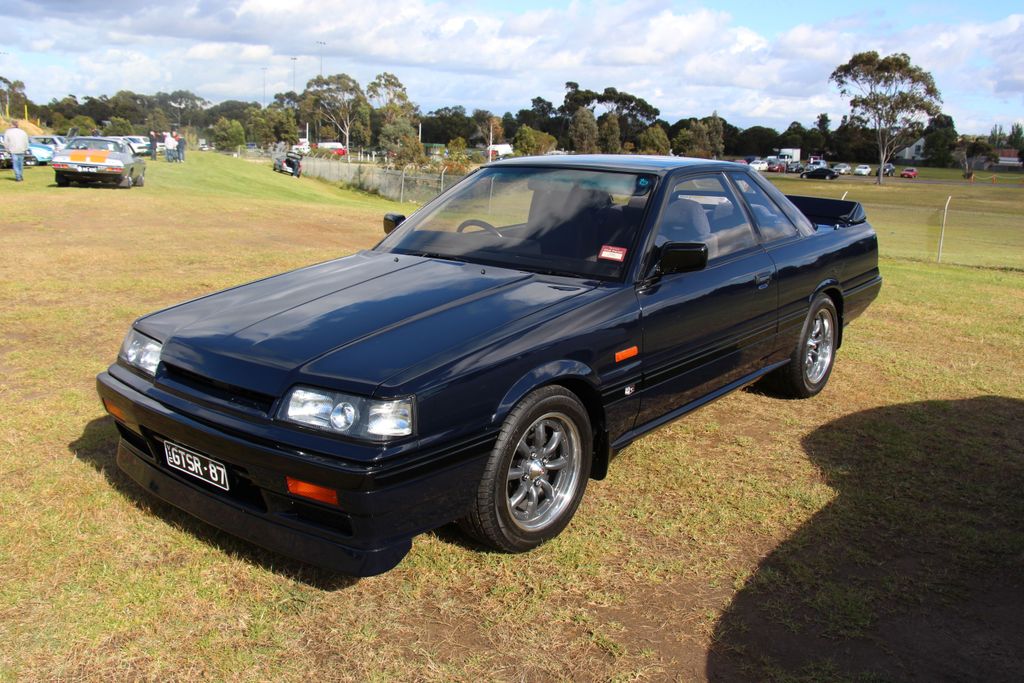
6. **1987 Nissan Skyline GTS-R (HR31)**Before the globally recognized, track-dominating reign of the iconic R32 GT-R, there was another homologation hero that quietly yet powerfully paved the way: the 1987 Nissan Skyline GTS-R (HR31). This model was a strategic and vital move by Nissan, meticulously designed and built to homologate the R31 Skyline for the rigorous and intensely competitive demands of Group A touring car racing. It showcased the brand’s unwavering dedication to motorsport and, crucially, laid significant groundwork for future performance legends. It was, in essence, a purebred race car dressed subtly for the street.
At its very heart was the formidable 2.0L turbocharged RB20DET-R engine, an exquisitely tuned powerplant capable of producing around 210 hp, a significant output for its time within Group A regulations. Production was strictly limited to approximately 800 units worldwide, solely for Group A homologation, which immediately ensured its exclusivity and underscored its genuine racing pedigree. Though the GTS-R was perhaps inevitably overshadowed by the R32 GT-R’s subsequent, monumental global success, it remains a true connoisseur’s choice for dedicated R31 fans and discerning collectors, appreciated for its raw, focused performance and profound historical significance. These rare gems are typically found at specialized Skyline gatherings in Japan or making star appearances at exclusive JDM expos.
Car Model Information: 2023 Dodge Challenger SRT Hellcat
Name: Nissan Skyline
Caption: 2019 Nissan Skyline Hybrid GT Type SP (HV37, Japan)
Manufacturer: unbulleted list
Aka: unbulleted list
Production: 1957–present
Class: unbulleted list
Layout: unbulleted list
Related: unbulleted list
Predecessor: Prince Sedan
Categories: 1960s cars, 1970s cars, 1980s cars, 1990s cars, 2010s cars
Summary: The Nissan Skyline (Japanese: 日産・スカイライン, Hepburn: Nissan Sukairain) is a brand of automobile originally produced by the Prince Motor Company starting in 1957, and then by Nissan after the two companies merged in 1967. After the merger, the Skyline and its larger counterpart, the Nissan Gloria, were sold in Japan at dealership sales channels called Nissan Prince Shop.
The Skyline was largely designed and engineered by Shinichiro Sakurai from inception, and he remained a chief influence of the car until his death in 2011.
Skylines are available in either coupé, or sedan body styles, plus station wagon, crossover, convertible and pickup/sedan delivery body styles. The later models are most commonly known by their trademark round brake and tail lights. The majority of Skyline models are rear-wheel drive, with all-wheel drive being available since the debut of the eighth-generation Skyline (R32).
While not distributed in the United States until its importation as the Infiniti G-series in the early 2000s (the first generation Prince Skyline was imported, but sold poorly), the Skyline’s prominence (particularly for the GT-R variant) in video games, movies and magazines resulted in many such cars being brought in as grey import vehicles there, and makes up a large amount of second-hand Japanese car imports to Europe and North America.
Starting with the third-generation Skyline (C10) and up to the tenth-generation Skyline (R34), the chassis, suspension and some of the engines were shared with the luxury-oriented longer wheelbase Nissan Laurel. When the former Prince factory at Musashimurayama closed in 2002 (coinciding with the discontinuation of the Laurel that same year), the Skyline used the then-new FM platform that was shared with the 350Z starting with the eleventh-generation Skyline (V35).
The eleventh-generation Skyline (V35) was another major turning point for the nameplate, as it dropped some of the previous generation Skyline’s trademark characteristics such as the straight-six engine (replaced with a V6) and turbocharging (reintroduced in the thirteenth-generation/V37 model), and eventually separated the GT-R into its own line. Nissan decided to retain the Skyline for the luxury-sport market segment formerly held by the Laurel, while its platform-mate, the 350Z, revived the Z line of pure sports cars. The V35 was the first Skyline made for export to North America, being sold under Nissan’s luxury marque Infiniti as the G35 in 2002. The Skyline (V36/J50) is sold in Europe, North America, South Korea, Taiwan, and the Middle East as the Infiniti G37 and EX respectively.
As of 2024, the Skyline is the only remaining sedan in Nissan’s Japanese lineup following the discontinuation of both the Fuga and Cima in 2022.
Get more information about: Nissan Skyline
Buying a high-performing used car >>>
Brand: Nissan Model: Skyline GTS-R
Price: $66,988 Mileage: 16,559 mi.
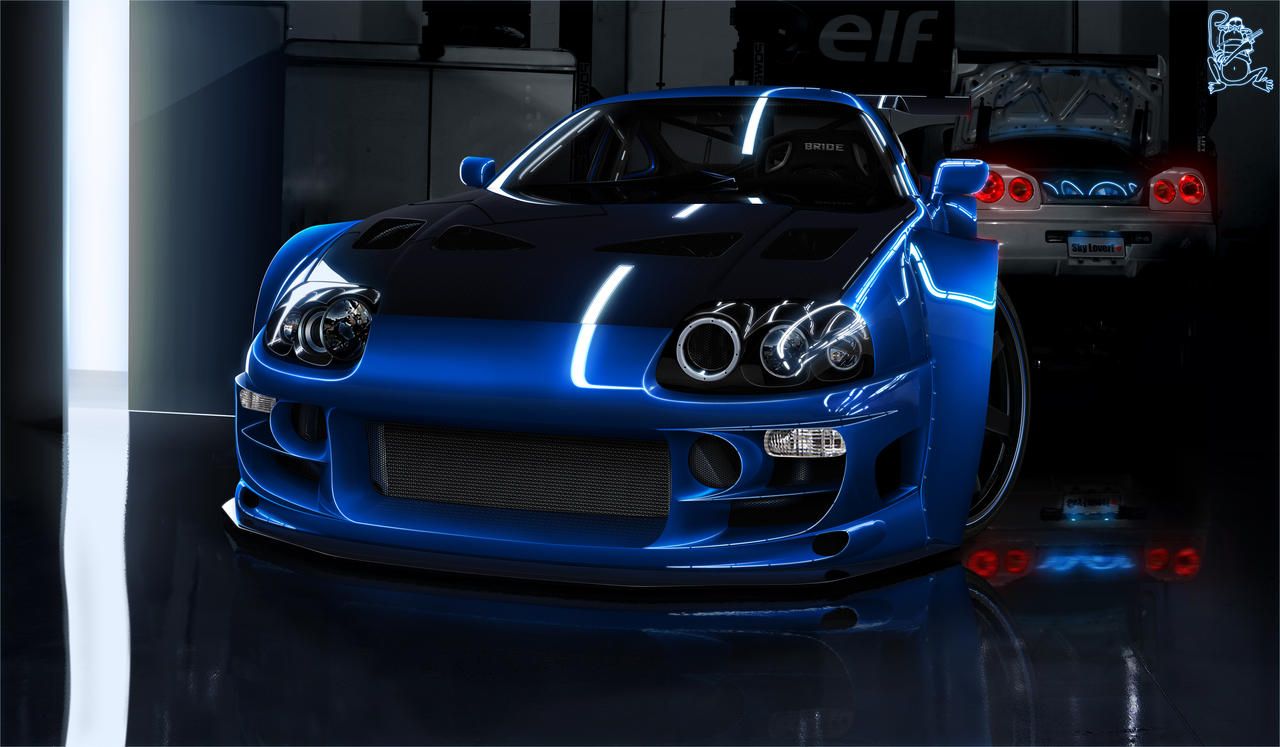
7. **1994 Toyota Supra TRD 3000GT**The Toyota Supra Mk4 is an icon in its own right, but the 1994 Toyota Supra TRD 3000GT takes this legendary status to an entirely new, almost mythical level of exclusivity and performance. This was not merely an aftermarket body kit; TRD, Toyota Racing Development, the official performance arm of Toyota, meticulously created the 3000GT package as a widebody homologation special specifically for the fiercely competitive JGTC (Japan Grand Touring Car Championship) racing series. It represented the ultimate expression of the Supra’s aerodynamic potential, pushing boundaries far beyond the standard production model.
Underneath its aggressive, undeniably purposeful factory widebody kit, the TRD 3000GT retained the celebrated 2JZ-GTE 3.0L twin-turbo engine. This legendary powerplant, renowned for its bulletproof reliability and immense tuning potential, delivered in excess of 320 hp in this application, providing thrilling acceleration and formidable top-end performance. While the official TRD 3000GT body kit itself was sold as a limited-edition accessory, only a tiny run of fully completed cars were officially produced and sold by TRD, making them incredibly scarce and highly coveted.
These JGTC aerodynamic marvels, the surviving official TRD builds, command exceptionally high prices among serious Supra collectors who recognize their profound historical and performance value. They are true showpieces, embodying a direct link to Toyota’s racing heritage. Consequently, they are prominently featured and celebrated at Supra specialist meets, major Toyota-oriented festivals, or emerge as star attractions at the most exclusive top-tier JDM auctions, drawing passionate bids from enthusiasts worldwide.
The journey through Japan’s automotive rarities continues, now shifting our focus towards the evolution of performance and exclusivity. We delve into a fascinating collection of eight modern Japanese supercars and homologation beasts, each a testament to relentless innovation and engineering excellence. These vehicles represent a pinnacle of design and power, dominating tracks and setting new benchmarks as modern masterpieces that continue to captivate enthusiasts globally.
Car Model Information: 1995 Toyota Supra SZ
Name: Toyota Supra
Caption: Toyota GR Supra (J29/DB)
Manufacturer: Toyota
Aka: unbulleted list
Production: unbulleted list
Class: Sports car
BodyStyle: fastback,coupé
Layout: Front-engine, rear-wheel-drive layout
Predecessor: Toyota Celica (A20)
Categories: 1980s cars, 1990s cars, 2000s cars, 2010s cars, 2020s cars
Summary: The Toyota Supra (Japanese: トヨタ・スープラ, Hepburn: Toyota Sūpura) is a sports car and grand tourer manufactured and developed by the Toyota Motor Corporation beginning in 1978. The name “supra” is a definition from the Latin prefix, meaning “above”, “to surpass” or “go beyond”.
The initial four generations of the Supra were produced from 1978 to 2002. The fifth generation has been produced since March 2019 and later went on sale in May 2019. The styling of the original Supra was derived from the Toyota Celica, but it was longer. Starting in mid-1986, the A70 Supra became a separate model from the Celica. In turn, Toyota also stopped using the prefix Celica and named the car Supra. Owing to the similarity and past of the Celica’s name, it is frequently mistaken for the Supra, and vice versa. The first, second and third generations of the Supra were assembled at the Tahara plant in Tahara, Aichi, while the fourth generation was assembled at the Motomachi plant in Toyota City. The 5th generation of the Supra is assembled alongside the G29 BMW Z4 in Graz, Austria by Magna Steyr.
The Supra traces much of its roots back to the 2000GT owing to an inline-6 layout. The first three generations were offered with a direct descendant to the Crown’s and 2000GT’s M engine. Interior aspects were also similar, as was the chassis code “A”. Along with this name, Toyota also included its own logo for the Supra. It was derived from the original Celica logo, being blue instead of orange. This logo was used until January 1986, when the A70 Supra was introduced. The new logo was similar in size, with orange writing on a red background, but without the dragon design. That logo, in turn, was on Supras until 1991 when Toyota switched to its current oval company logo. The dragon logo was a Celica logo regardless of what colour it was. It appeared on the first two generations of the Supra because they were officially Toyota Celicas. The dragon logo was used for the Celica line until it was also discontinued.
In 1998, Toyota ceased sales of the fourth-generation Supra in the United States. Production of the fourth-generation Supra for worldwide markets ended in 2002. In January 2019, the fifth-generation Supra, which was co-developed with the G29 BMW Z4, was introduced.
Get more information about: Toyota Supra
Buying a high-performing used car >>>
Brand: Toyota Model: Supra
Price: $49,999 Mileage: 16,556 mi.
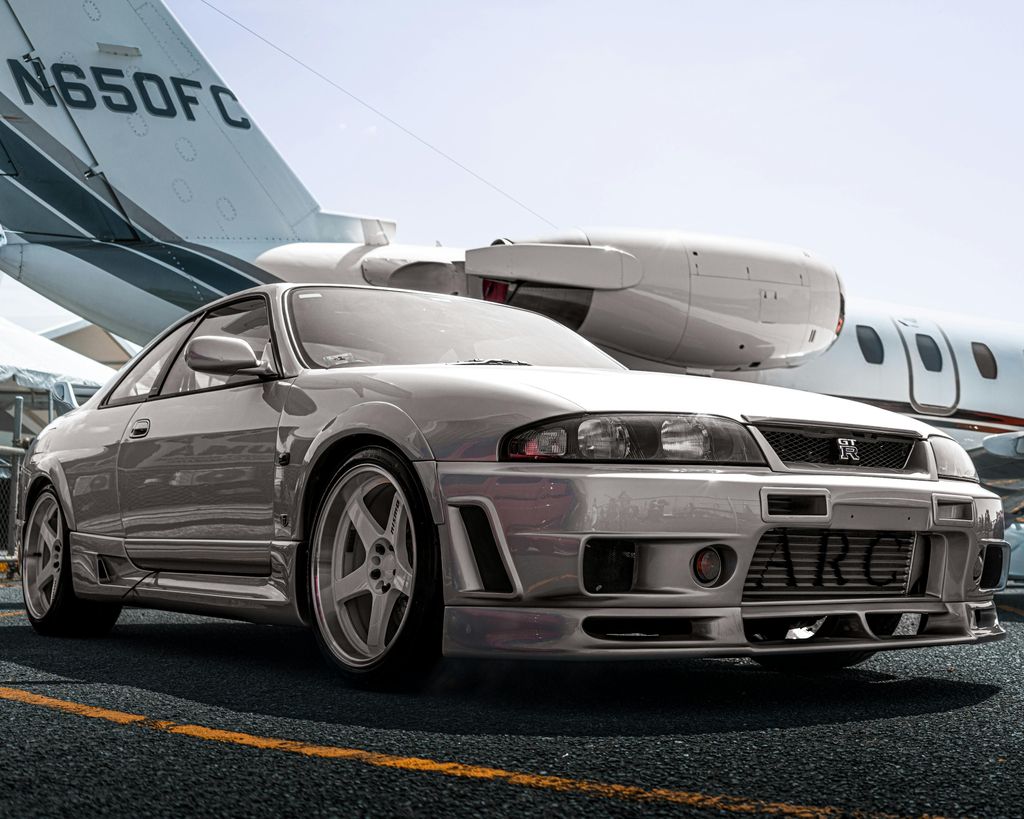
8. **1996 Nissan Skyline GT-R NISMO 400R (R33)**The 400R stands as NISMO’s ultimate expression of the R33 GT-R, a truly bespoke machine born from an intense desire to push performance boundaries. This exclusive model featured extensive engine modifications, directly benefiting from Nissan’s formidable Le Mans racing program. Every detail, from its distinct aero package to its reinforced chassis components, was meticulously crafted by NISMO, solidifying its status as a peak performance variant.
At its core, the 400R boasted the legendary “RBX-GT2” engine, a specially developed 2.8L twin-turbo powerplant, which unleashed approximately 400 hp. This formidable output, combined with the R33’s renowned all-wheel-drive system, delivered breathtaking acceleration and unparalleled on-track prowess. With a production run limited to a mere 44 units, each wearing unique 400R aero and chassis parts, its rarity was assured from the outset, immediately establishing it as one of the most collectible official Skyline GT-R variants ever created.
For serious enthusiasts and collectors, encountering a NISMO 400R is a truly rare and memorable occasion. These prized automotive treasures are primarily found at the most prestigious Nissan Skyline events or specialized JDM car gatherings across Japan, where they continue to command immense respect and admiration. They serve as a powerful testament to NISMO’s engineering prowess and their unwavering commitment to creating the ultimate driving machines.
Car Model Information: 2023 Dodge Challenger SRT Hellcat
Name: Nissan Skyline GT-R
Caption: 2002 Nissan Skyline GT-R V·spec II (BNR34)
Manufacturer: Nissan
Production: unbulleted list
Assembly: unbulleted list
Class: Sports car
Related: unbulleted list
Transmission: unbulleted list
Predecessor: Nissan Skyline#BLRA-3 Skyline Sport
Successor: Nissan GT-R
Categories: 1970s cars, 1980s cars, 1990s cars, 2000s cars, 24 Hours of Le Mans race cars
Summary: The Nissan Skyline GT-R (Japanese: 日産・スカイラインGT-R, Hepburn: Nissan Sukairain GT-R) is a Japanese sports car based on the Nissan Skyline range. The first cars named “Skyline GT-R” were produced between 1969 and 1972 under the model code KPGC10, and were successful in Japanese touring car racing events. This model was followed by a brief production run of second-generation cars, under model code KPGC110, in 1973.
After a 16-year hiatus, the GT-R name was revived in 1989 as the BNR32 (“R32”) Skyline GT-R. Group A specification versions of the R32 GT-R were used to win the Japanese Touring Car Championship for four years in a row. The R32 GT-R also had success in the Australian Touring Car Championship, with Jim Richards using it to win the championship in 1991 and Mark Skaife doing the same in 1992, until a regulation change excluded the GT-R in 1993. The technology and performance of the R32 GT-R prompted the Australian motoring publication Wheels to nickname the GT-R “Godzilla” in its July 1989 edition. Wheels then carried the name through all the generations of Skyline GT-Rs, most notably the R34 GT-R, which they nicknamed “Godzilla Returns”, and described as “The best handling car we have ever driven”. In tests conducted by automotive publications, R34 GT-R have covered a quarter of a mile (402 metres) in 12.2 seconds from a standing start time and accelerated from 0–100 km/h (0–62 mph) in 4.4 seconds.
The Skyline GT-R became the flagship of Nissan performance, showing many advanced technologies including the ATTESA E-TS all-wheel drive system and the Super-HICAS four-wheel steering. Today, the car is popular for import drag racing, circuit track, time attack and events hosted by tuning magazines. Production of the Skyline GT-R ended in August 2002. The car was replaced by the GT-R (R35), an all-new vehicle based on an enhanced version of the Skyline V36 platform. Although visibly different, the two vehicles share similar design features and are manufactured in the same factory.
The Skyline GT-R was never manufactured outside Japan, and the sole export markets were Hong Kong, Singapore, Australia and New Zealand, in 1991, and the UK (in 1997, due to the Single Vehicle Approval scheme). They are also popular across the world as used Japanese imports.
Despite this, the Skyline GT-R has become an iconic sports car as a grey import vehicle in the Western world (mainly the United Kingdom, Australia, New Zealand, South Africa, Ireland, Canada, and the United States). It has become notable through pop culture such as The Fast and the Furious, Initial D, Shakotan Boogie, Tokyo Xtreme Racer, Wangan Midnight, Need for Speed, Forza, Driving Emotion Type-S, Test Drive, and Gran Turismo.
In 2019, Nismo announced that it would resume production of spare parts for all generations of the Skyline GT-R, including body panels and engines.
Get more information about: Nissan Skyline GT-R
Buying a high-performing used car >>>
Brand: Nissan Model: Skyline GT-R
Price: $66,988 Mileage: 16,559 mi.
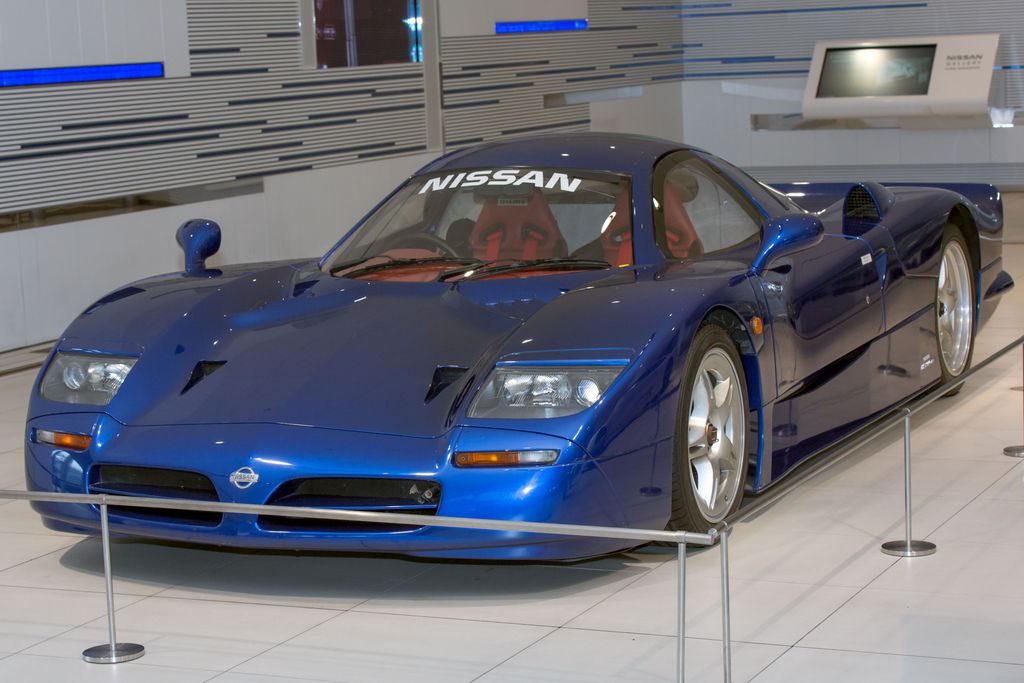
9. **1998 Nissan R390 GT1 Road Car**Born from the crucible of endurance racing, the 1998 Nissan R390 GT1 Road Car represents the pinnacle of Nissan’s ambition to conquer Le Mans. To meet the stringent GT1 homologation requirements, Nissan was compelled to construct at least one road-legal example of this extreme racing machine. Some sources even suggest the existence of two road chassis, underscoring its profound scarcity.
This mid-mounted beast was propelled by a formidable 3.5L twin-turbo V8 engine, unleashing an astonishing 550 hp, effectively blurring the lines between race car and street car. Its production numbers were incredibly low, with possibly just one or two road cars ever completed, cementing its status as the rarest Nissan supercar. This extraordinary exclusivity makes it a holy grail for automotive connoisseurs worldwide.
Today, one documented example of the R390 GT1 Road Car is believed to reside within the hallowed halls of Nissan’s Zama facility, a highly protected and rarely displayed automotive masterpiece. Its public appearances are exceptionally limited, typically reserved for special manufacturer exhibitions or highly exclusive, invitation-only Nissan heritage tours, offering only a fleeting glimpse into Nissan’s audacious motorsport ambitions.
Car Model Information: 2023 Dodge Challenger SRT Hellcat
CarName: Nissan R390 GT1
Category: LMGT1
Constructor: Nismo
Designer: Tony Southgate,Ian Callum,Yutaka Hagiwara
Predecessor: Nissan R383
Successor: Nissan R391
Team: Nismo,Tom Walkinshaw Racing
Drivers: flagicon,Masahiko Kageyama,flagicon,Satoshi Motoyama,flagicon,Masami Kageyama,flagicon,Michael Krumm,flagicon,Jan Lammers,flagicon,Eric van de Poele,flagicon,Andrea Montermini,flagicon,Franck Lagorce,flagicon,John Nielsen (racing driver)
Chassis: Carbon fibre
FrontSuspension: Double wishbone suspension
RearSuspension: Double wishbone pushrod system
EngineName: Nissan VRH35 engine
Capacity: cvt
Configuration: V8 engine
EnginePosition: Rear mid-engine, rear-wheel-drive layout,Longitudinal engine
GearboxName: Xtrac
Gears: 6-speed
Type: Sequential manual transmission
Wheelbase: 2720 mm
Abbr: on
Length: 4580 mm
Width: 2000 mm
Height: 1090 mm
Weight: 1098 kg
Tyres: Bridgestone
Debut: 1997 24 Hours of Le Mans
Races: 2
Wins: 0
Poles: 0
FastestLaps: 0
Categories: 24 Hours of Le Mans race cars, All articles needing additional references, Articles needing additional references from November 2015, Articles with short description, Commons category link is on Wikidata
Summary: The Nissan R390 GT1 was a racing car built in Atsugi, Japan. It was designed primarily to gain a suitable racing entry in the 24 Hours of Le Mans in 1997 and 1998. It was built to race under the grand touring style rules, requiring a homologated road version to be built. Therefore, the R390 was built originally as road car, then a racing version of the car was developed afterwards. Only one R390 road car was ever built and is stored at Nissan’s Zama facility, although one of the race cars was later modified for road use. The road car was claimed to be capable of attaining a top speed of 354 km/h (220 mph). However, this claim has never been proven.
Get more information about: Nissan R390 GT1
Buying a high-performing used car >>>
Brand: Nissan Model: R390 GT1 Road Car
Price: $66,988 Mileage: 16,559 mi.
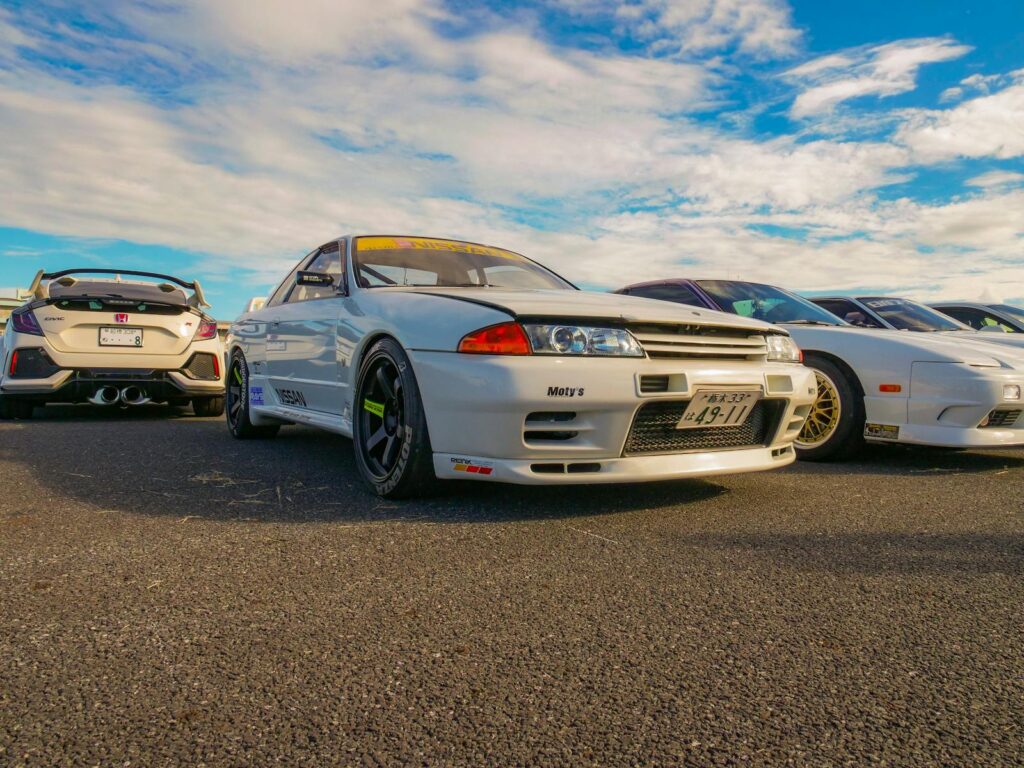
10. **2002 Honda NSX-R GT (NA2)**The 2002 Honda NSX-R GT stands as the ultimate, most extreme variant of the iconic NSX, crafted with a singular purpose: to dominate on the race track. Honda meticulously produced just five of these NSX-R GT units, purely to satisfy the rigorous Super GT homologation rules. This allowed the integration of radical aerodynamic improvements, most notably a distinctive long-tail style scoop that dramatically enhanced its downforce and high-speed stability.
Underneath its aggressive, competition-ready exterior, the NSX-R GT retained the celebrated 3.2L V6 VTEC engine, officially spec’d at approximately 280 hp, though its true track performance suggested even more. What truly set it apart was the considerable weight reduction achieved through extensive use of lightweight materials and a focus on race-centric components, making it an incredibly agile and responsive machine. Its limited production, rumored to have been sold only to a select few VIP owners, makes it an automotive ghost.
Information on each of the five units is scarce, and these magnificent machines are rarely seen in public. They occasionally surface, often whispered about, at exclusive Honda gatherings or at highly secret track events, where their raw performance and extreme rarity are quietly celebrated among the most discerning enthusiasts. It is a true testament to Honda’s commitment to motorsport and engineering purity.
Car Model Information: 2023 Dodge Challenger SRT Hellcat
Name: Honda NSX (NA1/2)
Manufacturer: Honda
Aka: Acura NSX (North America and Hong Kong)
Production: August 1990 – November 30, 2005
Assembly: List of Honda facilities#Japan,List of Honda facilities#Japan
Designer: Ken Okuyama,Masahito Nakano (1987),Shigeru Uehara,James Stevens (1988)
Class: Sports car
BodyStyle: coupé,targa top
Related: Honda HSC
Layout: rear mid-engine, rear-wheel-drive layout
Engine: {{convert,2977,cc,L cuin,abbr=on,1,Honda C engine#C30A,V6 engine
Abbr: on
Powerout: 3.0-litre models: {{convert,270,hp,kW PS,0,abbr=on,210 lbft
Transmission: Automatic transmission,Manual transmission,6-speed manual
Wheelbase: 2530 mm
Length: {{convert,4405,mm,1,abbr=on
Width: 1810 mm
Height: {{convert,1170,mm,1,abbr=on
Weight: (1991–1992): {{convert,3010,lb,kg,abbr=on
Successor: Honda NSX (second generation)
ModelYears: 1991–2006
Categories: 2000s cars, All articles with unsourced statements, Articles needing translation from German Wikipedia, Articles with short description, Articles with unsourced statements from February 2012
Summary: The first generation Honda NSX (New Sportscar eXperimental), marketed in North America and Hong Kong as the Acura NSX, is a 2-seater, mid-engine sports car that was manufactured by Honda in Japan from 1990 until 2006.
Get more information about: Honda NSX (first generation)
Buying a high-performing used car >>>
Brand: Honda Model: NSX-R GT
Price: $66,988 Mileage: 16,559 mi.

11. **2006 Mitsubishi Lancer Evo IX MR FQ-400 (UK Spec)**For the fervent Mitsubishi Lancer Evolution faithful, the 2006 Evo IX MR FQ-400, a UK-spec marvel, represents the absolute pinnacle of factory-tuned performance. This extraordinary machine was born from a unique collaboration between Mitsubishi UK and specialist tuners, culminating in the ferocious FQ series. The FQ-400, in particular, was engineered to deliver explosive power and dominated 0-60 mph sprints, becoming a legend in its own right.
At its heart beat the highly celebrated 2.0L 4G63 inline-four engine, meticulously tuned to produce a staggering 405 hp in its FQ-400 trim. This immense power, channeled through its renowned all-wheel-drive system, ensured breathtaking acceleration and unparalleled grip. With production limited to a mere double-digit figure and primarily destined for the highly competitive UK market, its exclusivity was guaranteed from day one, making it an instant collector’s item.
Today, this formidable saloon is highly sought after by dedicated Evo enthusiasts, who recognize its unique blend of raw power and homologated pedigree. Due to its limited production and initial market focus, it is rarely exported outside the United Kingdom, remaining a cherished sight at British or Japanese performance car meets. It serves as a potent reminder of the Evo’s dominant era in the world of high-performance rally-bred sedans.
Car Model Information: 2023 Dodge Challenger SRT Hellcat
Name: Mitsubishi Lancer Evolution
Caption: Mitsubishi Lancer Evolution X
Manufacturer: Mitsubishi Motors
Production: 1992–2016
BodyStyle: sedan (car),station wagon
Assembly: Japan:,{{blist,Okazaki, Aichi,Kurashiki, Okayama
Class: Sport compact car
Layout: Front-engine, four-wheel-drive
Engine: Straight-4,Mitsubishi Sirius engine#4G63,Mitsubishi 4B1 engine#4B11T
Transmission: Twin Clutch SST,5-speed automatic (2002, 2006–2007),manual transmission,6-speed manual (2003–2008)
Predecessor: Mitsubishi Galant VR-4
Related: Mitsubishi Lancer,Mitsubishi Lancer WRC,Mitsubishi Racing Lancer
Categories: 2000s cars, 2010s cars, All-wheel-drive vehicles, All Wikipedia articles in need of updating, All Wikipedia articles that are incomprehensible
Summary: The Mitsubishi Lancer Evolution, popularly referred to as the “Evo”, is a sports sedan and rally car based on the Lancer that was manufactured by Japanese manufacturer Mitsubishi Motors from 1992 until 2016. There have been ten official versions to date, and the designation of each model is most commonly a Roman numeral. All generations use two-litre intercooled turbo inline four-cylinder engines and all-wheel drive systems.
The Lancer was originally intended only for Japanese markets, but demand on the “grey import” market led the Evolution series to be offered through Ralliart dealer networks in the United Kingdom and in various European markets from around 1998. Mitsubishi decided to export the eighth generation Evolution to the United States in 2003 after witnessing the success Subaru had in that market the previous year with the Subaru Impreza WRX.
All domestic-market versions, until the release of the Evolution IX in 2005, were limited by a gentlemen’s agreement between Japanese car manufacturers to advertise no more than 280 PS (206 kW; 276 hp). However, sources say Mitsubishi had already been producing cars with more power but had been underrating the official power outputs in order to comply with the agreement. Therefore, each subsequent version has unofficially evolved above the advertised power figures, with the Japanese-market Evolution IX reaching an alleged output of around 320 PS (235 kW; 316 hp). Various special versions available in other markets, particularly the UK, have official power outputs up to 446 PS (328 kW; 440 hp).
The tenth and final generation of the Lancer Evolution, the Evolution X, was launched in Japan in 2007, and overseas markets in 2008. The Evolution X was produced for almost 10 years until Mitsubishi retired the Lancer Evolution in April 2016.
Get more information about: Mitsubishi Lancer Evolution
Buying a high-performing used car >>>
Brand: Mitsubishi Model: Lancer Evo IX MR FQ-400
Price: $66,988 Mileage: 16,559 mi.
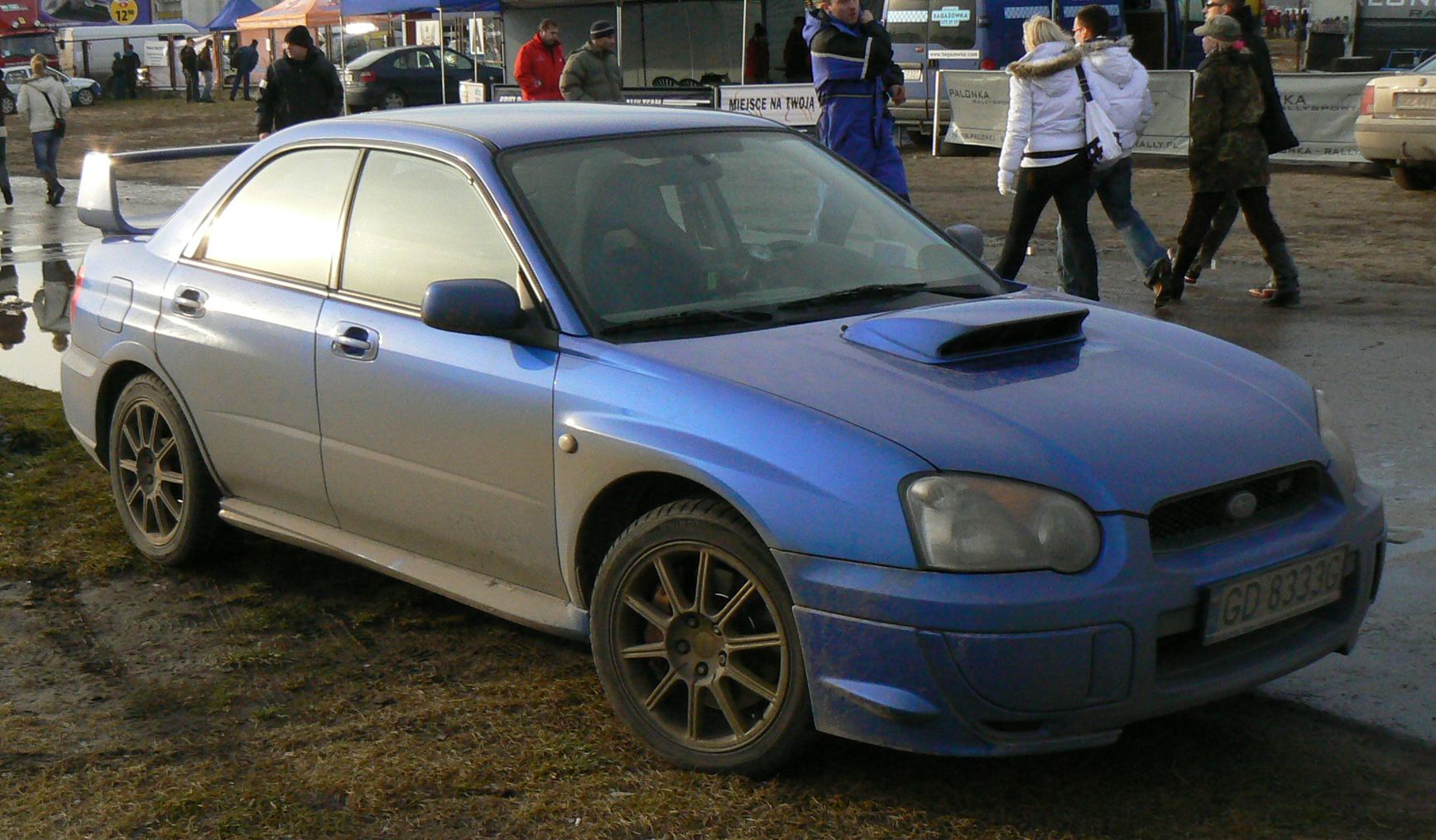
12. **2007 Subaru Impreza WRX STi Spec C Type RA-R**The 2007 Subaru Impreza WRX STi Spec C Type RA-R is a hardcore, rally-inspired variant, exclusively developed for the discerning domestic Japanese market. This model was meticulously engineered for uncompromised performance, achieving significant weight reduction and featuring a markedly tighter suspension setup, translating directly to enhanced agility and track prowess. It was, in essence, a production rally car for the enthusiast.
Powering this focused machine was the legendary EJ20 turbo engine, delivering approximately 320 hp, placing it at the very top tier of STi specifications for its era. Its production was strictly limited to around 300 units, with a clear focus on applications for track days or serious rally usage, making it an extremely coveted item for collectors who prioritize pure driving dynamics and competition heritage. Its scarcity made it instantly desirable.
For passionate Subaru rally fans, the RA-R is a genuine automotive gem, often lauded for its unparalleled driving engagement and raw, unfiltered performance. Consequently, this specialized STi variant is seldom found outside of Japan, adding to its mystique and desirability. Enthusiasts might catch a glimpse of these rare machines at JDM-specific gatherings, major Subaru fan festivals, or within the exclusive confines of private STi clubs, a testament to its enduring legend.
Car Model Information: 2023 Dodge Challenger SRT Hellcat
Name: Subaru Impreza WRX STI
Caption: 2011 Subaru Impreza WRX STI Sedan (3rd generation)
Manufacturer: Subaru
Production: 1994–2014
Assembly: Ōta, Gunma
Predecessor: Subaru Legacy (first generation)
Successor: Subaru WRX STI
Class: Sport compact,World Rally Car
BodyStyle: Compact Sedan, Coupe, Wagon, Hatchback
Layout: Front-engine design
Engine: Subaru EJ engine
Categories: All-wheel-drive vehicles, All articles needing additional references, All articles with unsourced statements, Articles needing additional references from July 2025, Articles with short description
Summary: The Subaru Impreza WRX STI is a high performance model of the Subaru Impreza compact car line, manufactured by Japanese automaker Fuji Heavy Industries Subaru.
In 1988, FHI created Subaru Tecnica International (STi) as its motorsport division to develop and compete in the FIA World Rally Championship and other motorsports activities. Following the introduction of the first generation Impreza in November 1992 and the following year’s debut of the Group A rally car into the WRC, an ‘STi version’ was made commercially available in January 1994 as a homologation model under FIA regulations. Thereafter, subsequent evolutions dubbed STi Version or simply STI were manufactured and sold alongside the Impreza model lineup initially in Japan only and later in selected world markets. As the STi or STI model was typically the highest spec of the Impreza, it has become popular with performance enthusiasts, tuners and amateur racers in many motorsports disciplines especially rallying and circuit driving.
FHI has released many different models and versions including special limited editions of the WRX STI. However many of these versions were and are only available in the Japanese Domestic Market. Although the concept behind the STI model is taking a base model such as the Impreza or Legacy and further developing it for high performance, STI models fall mainly into 2 categories. The first is a fully developed and tested model with the purpose of homologating it for motorsports which is sold as a street legal road car. The second is a complete car pre-fitted from the factory with parts that are available from the STI catalogue and marketed as a ‘Tuned by STI’ model. Spin-off models with mainly cosmetic additions or alterations are also marketed usually in limited quantities.
Get more information about: Subaru Impreza WRX STI
Buying a high-performing used car >>>
Brand: Subaru Model: Impreza WRX STi
Price: $66,988 Mileage: 16,559 mi.
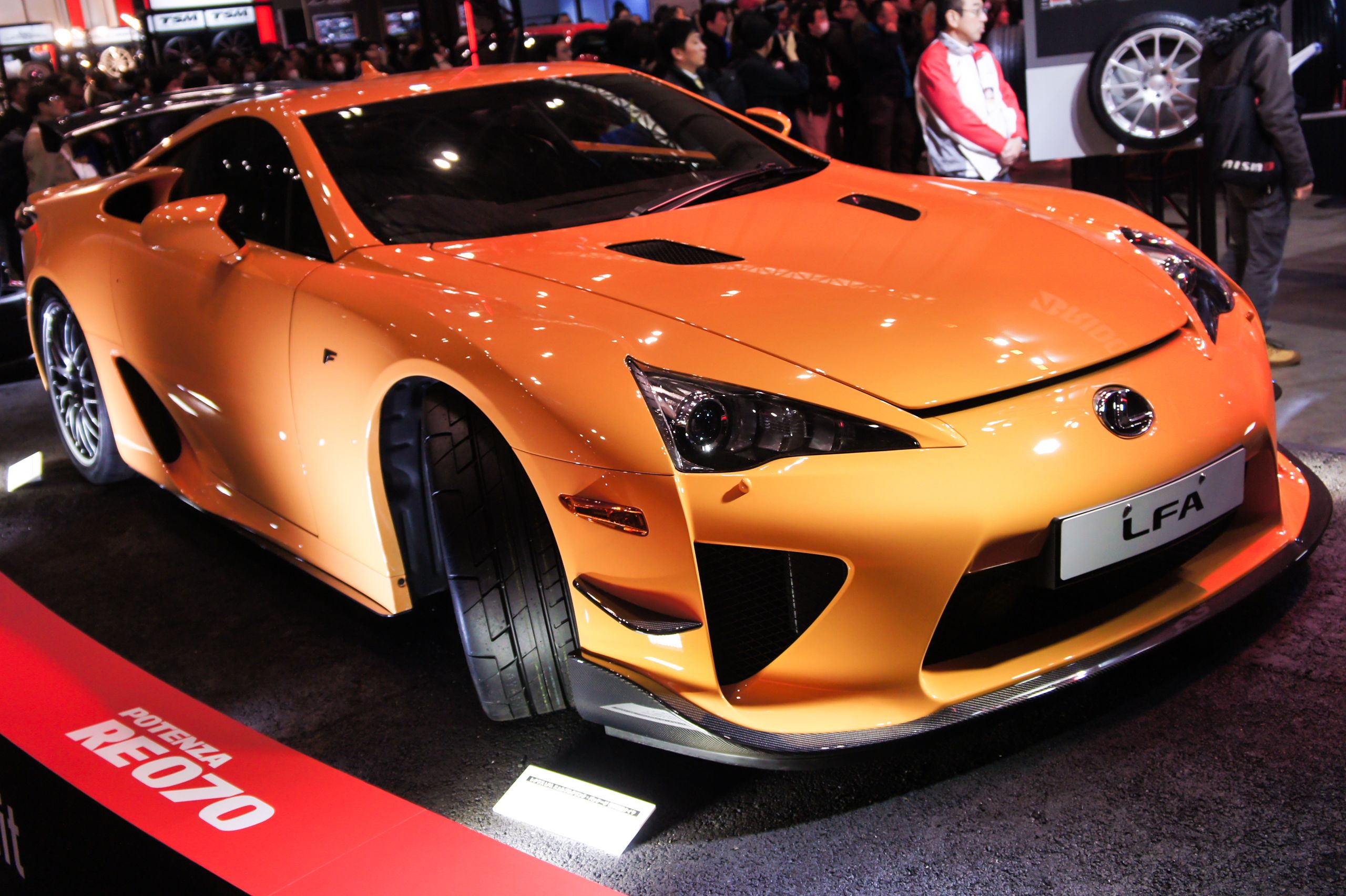
13. **2012 Lexus LFA Nürburgring Package**The standard Lexus LFA was already a sensation upon its debut, a masterpiece of engineering and acoustic artistry with its F1-inspired V10 engine. However, Lexus took this marvel to an even more extreme level with the creation of the 2012 LFA Nürburgring Package. Only 50 of these specialized cars were built, featuring enhanced aerodynamics and a slight bump in power, transforming an already exceptional supercar into a track-focused weapon. Its carbon-fiber monocoque construction underscored its elite status.
At its heart, the Nürburgring Package retained the glorious 4.8L V10 engine, now tuned to produce approximately 562 hp, delivering an exhilarating F1-like exhaust note that remains one of the most distinctive in automotive history. Of the total 500 LFAs produced, these 50 Nürburgring Package cars represent the ultimate, most coveted iteration. Their rarity is amplified by their bespoke track-focused enhancements and limited availability.
These exquisite examples of Japanese craftsmanship are revered among modern supercar enthusiasts, admired for their exquisite build quality, unparalleled acoustic symphony, and formidable track capabilities. They are prominent fixtures at high-profile supercar meets or grace the most exclusive Lexus brand showcases. Owning one is to possess a pinnacle of modern automotive engineering, a true collector’s dream.
Car Model Information: 2012 Lexus LFA Coupe 2D
Name: Lexus LFA
Manufacturer: Toyota
ModelCode: LFA10
Production: December 2010 – December 2012,500 units
Assembly: Toyota, Aichi
Class: Sports car
BodyStyle: coupé
Layout: Front mid-engine, rear-wheel-drive
Designer: Kengo Matsumoto (chief designer)
Engine: Toyota LR engine#1LR-GUE,Firing order#Even and uneven firing order,V10 engine
Transmission: List of Aisin transmissions#Longitudinal rear-wheel drive (transaxle),Automated manual transmission
Wheelbase: 2605 mm
Abbr: on
Length: 4505 mm
Width: 1895 mm
Height: 1220 mm
Weight: 3483 lb
Order: flip
Categories: All articles containing potentially dated statements, All articles with dead external links, Articles containing Japanese-language text, Articles containing potentially dated statements from 2020, Articles with dead external links from February 2024
Summary: The Lexus LFA (Japanese: レクサス・LFA, Rekusasu LFA) is a two-door sports car produced between 2010 and 2012 by the Japanese carmaker Toyota under its luxury marque, Lexus. Lexus built 500 units over its production span of two years.
The development of the LFA, codenamed TXS, began in early 2000. The first prototype was completed in June 2003, with regular testing at the Nürburgring starting in October 2004. Over the decade, numerous concept cars were unveiled at various motor shows. The first concept appeared in January 2005 at the North American International Auto Show as a design study. In January 2007, a more aerodynamic design was introduced, and in January 2008, a roadster version was showcased. The production version of the LFA debuted at the Tokyo Motor Show in October 2009—commemorating Lexus’s 20th anniversary—and the official manufacture of the car began on 15 December 2010 at the Motomachi production facility in Toyota, Aichi.
The 4.8 L 1LR-GUE V10 engine, as fitted to the LFA, produces a power output of 412 kilowatts (560 PS; 553 hp) and 480 newton-metres (350 lb⋅ft), sufficient to give the car a 0–97 km/h (60 mph) of 3.6 seconds and a maximum speed of 325 kilometres per hour (202 mph). The LFA’s body mass is composed of sixty-five per cent carbon fibre-reinforced polymer, and incorporates various lightweight materials such as aluminium, titanium and magnesium. Lexus ended production of the LFA on 17 December 2012, two years and two days after it commenced. The LFA has received awards including Road & Track’s “Best of the 2009 Tokyo Auto Show” and Top Gear’s “5 Greatest Supercars of the Year”.
Get more information about: Lexus LFA
Buying a high-performing used car >>>
Brand: Lexus Model: LFA
Price: $849,000 Mileage: 9,487 mi.
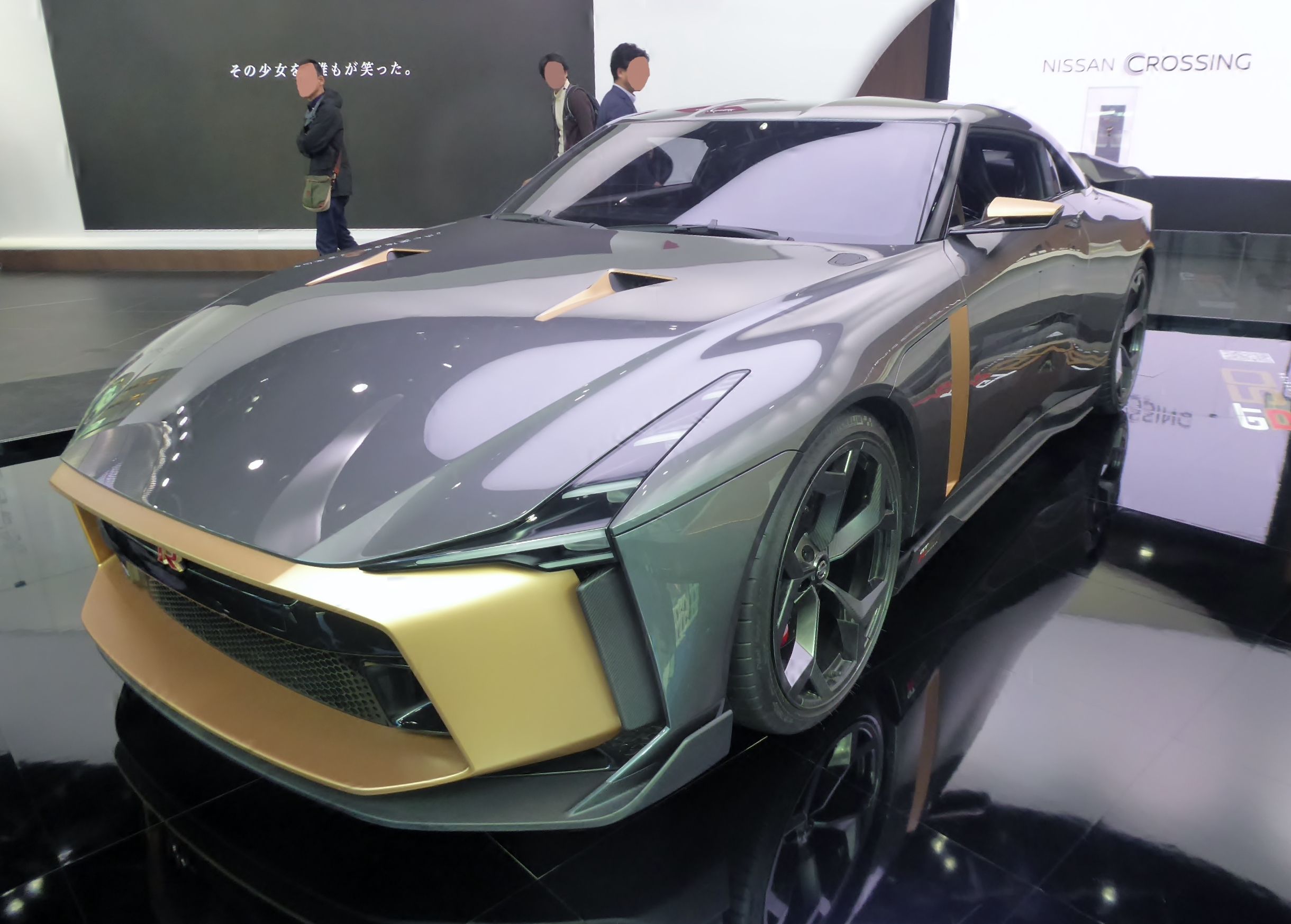
14. **2020 Nissan GT-R50 by Italdesign**To commemorate half a century of the legendary GT-R, Nissan embarked on an ambitious collaboration with the renowned Italian design house Italdesign, resulting in the breathtaking 2020 Nissan GT-R50. This extraordinary machine is far more than just a styling exercise; it features a bespoke body, advanced aerodynamic elements, and a significantly uprated engine, establishing itself as a truly unique and exclusive hyper-GT.
Under its dramatically redesigned skin lies a specially tuned 3.8L twin-turbo VR38DETT engine, meticulously hand-built to unleash a staggering 720 hp. This immense power output, combined with the GT-R’s advanced all-wheel-drive system, ensures a driving experience that is both brutal and refined. Production was strictly limited to just 50 units, each meticulously built to individual customer specifications, making every GT-R50 a unique piece of automotive art.
These million-dollar masterpieces were sold to a select group of discerning buyers who sought the ultimate expression of GT-R heritage and Italian design flair. Consequently, the GT-R50 makes exceedingly rare appearances, typically seen only at the most exclusive supercar events or at grand Nissan GT-R anniversary gatherings, where its striking presence and immense performance captivate all who behold it.
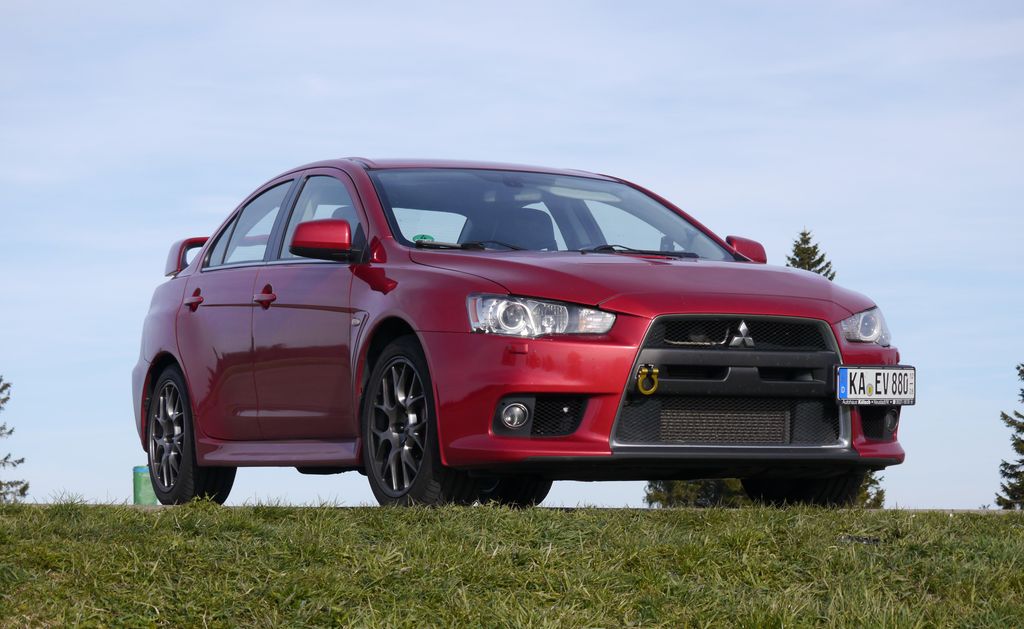
15. **2017 Mitsubishi Lancer Evolution Final Edition**The 2017 Mitsubishi Lancer Evolution Final Edition marks a poignant moment in automotive history: the swan song for Mitsubishi’s famed Lancer Evolution line. As the brand phased out this rally icon, the Final Edition was released as a tribute, featuring subtle performance tweaks and unique numbering that underscored its special status. It was a fitting farewell to a legend that had dominated rally stages and performance car meets for decades.
Powering this last hurrah was the reliable 2.0L 4B11T turbo inline-four engine, tuned to deliver approximately 300 hp, providing the spirited driving experience Evo enthusiasts had come to adore. Its production was limited to around 1,000 units in certain markets, ensuring its immediate collectibility and signifying the definitive end of the Evo’s iconic run. Each unit carried the weight of a celebrated motorsport lineage.
As expected, the Final Editions sold out quickly, cementing their place as valuable collector’s items and marking the conclusive end of Mitsubishi’s celebrated rally lineage. These special cars are now cherished by their owners and frequently showcased at enthusiast clubs, tuner events, or modern JDM exhibitions, where they stand as proud reminders of a bygone era of raw, unadulterated performance and rally pedigree.
Whether it’s the vintage Prince Skyline that audaciously challenged European rivals, the elegant Toyota 2000GT that unequivocally introduced Japanese exotics to the Western world, or the modern GT-R50 that boldly redefines an enduring icon, each of these 15 Rare Japanese Cars stands as a powerful testament to the nation’s relentless pursuit of innovation, unbridled passion, and unparalleled engineering excellence—all within the highly exclusive realm of limited production. These are not merely cars; they are cherished fragments of automotive history, beckoning enthusiasts to explore their legendary tales.



